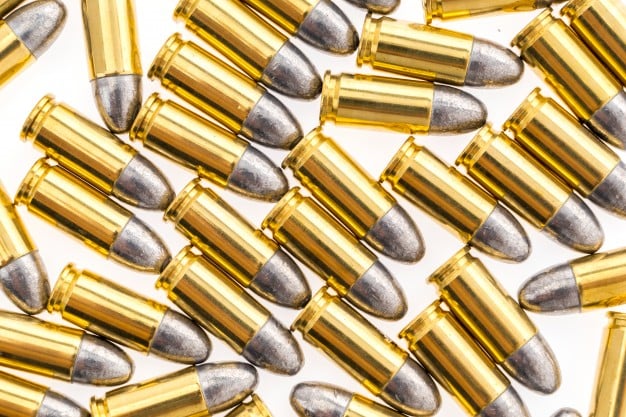
Updated January 27, 2024
The latest statistics from the Firearm Industry Trade Association indicate that more than six million new gun owners entered the U.S. market in late 2020. This means that quite a number of newbies to the world of firearms will be learning to buy ammunition and load their own guns for the first time.
One of the most important lessons they must learn is the anatomy of a single piece of ammunition. After all, contrary to popular belief, it isn’t just the bullet that’s involved in a round of ammo. Other components, like the case, primer, and gunpowder, contribute to the thrilling and powerful experience of shooting a firearm.
If you’re a new gun owner learning about ammunition for the first time, you’ve come to the right place online. This brief guide will fill you in on the different parts of your standard firearms ammo. This knowledge will serve you well when you’re buying ammo rounds, small pistol primers, rifle primers, or other ammunition components of your own.
The majority of the time, ammunition and bullets are mistaken for one another. What you mistake for a bullet is really ammunition. In actuality, a bullet is just a projectile. It is a piece of metal that emerges from the gun’s barrel. The entire assembly is referred to as the cartridge case or the ammo prior to firing. – EasyshotTargets
Anatomy of an Ammunition
The Case
The first component you should know about is the ammunition case. This is the part of the ammo that holds all the other parts together in one place before the ammo is fired off. Ammunition casing is typically made of copper, steel, or brass. However, it’s not uncommon for some casings to be manufactured out of paper or plastic.
The Primer
The second component of ammunition is the primer. It’s a slurry made out of an explosive chemical compound that’s in turn compressed into a pellet and then protected by an additional layer of metal. When struck by a firing pin, the ammunition primer ignites the gunpowder and sets off a miniature explosion.
There are two types of primer ignition system: rimfire and centerfire. That means that the primer can either be placed in the rim of the case or at the center of its base.
Gunpowder
The third component is the gunpowder, also known as the propellant in the ammunition. Gunpowder is what allows the projectile to shoot forward with considerable force. When the primer strikes the gunpowder, the gunpowder begins to burn rapidly and converts into an expanding gas. That’s what’s responsible for the blast that propels the projectile forward.
The Projectile
The last component of ammunition is the projectile, the component that’s actually expelled from the gun barrel. A bullet is an example of a projectile launched from firearms like rifles and pistols. A slug, on the other hand, is a solid projectile used with shotguns. These projectiles can be made of materials like steel, copper, rubber, or polymer.
Remember the Rules of Ammunition Safety
The information above details the individual parts that makeup ammo and how ammo is supposed to work. It’s one thing to know these in theory, but you should also put these concepts into practice with ammunition safety. The following are some reminders about how to treat ammunition and ammunition components safely.
- Learn beforehand about which type of ammunition and what kinds of ammunition components you need to source for your model of firearm.
- Ensure that your firearm barrel is completely clear of obstructions before you load and shoot.
- In the case that your gun fails to fire off its ammunition the first time, stay in a shooting position for a few seconds. If it still doesn’t shoot a projectile, point the muzzle in a safe direction and very carefully unload your firearm.
Additional Tips on Buying Ammunition Components
Now that you know the four key components of ammunition, you can be more discerning about the ammo you source for your own firearm. Here are a few other tips related to ammunition components that should be of great help when you’re buying them.
- When it comes to ammo and ammunition components, more is more for new rifle and pistol owners. Longtime enthusiasts sometimes like to reload ammo because it saves money and because they don’t mind doing the additional labor. However, if you aren’t that familiar just yet with your firearm ammunition, or if you think it’s too time-consuming, it’s better to buy ammo regularly. Luckily, there are a lot of great deals to be found online.
- Certain ammunition components, like primers, go off the shelves pretty fast. Find a supplier of ammo if you want to have regular stock for your firearm. Buy in bulk when you can, and ask your supplier if they accommodate pre-orders.
- Consider the weight of the ammunition and ammunition components you’re buying. Items that are made of lighter material travel faster, but hit with less force. Conversely, heavier items travel slower but have a greater impact. It really depends on your application and what kind of experience you want to have when you’re shooting.
It’s good to research even more about ammunition components, their types, and the different materials they’re made of. Then you can decide for yourself which ammo works for your particular firearm.












